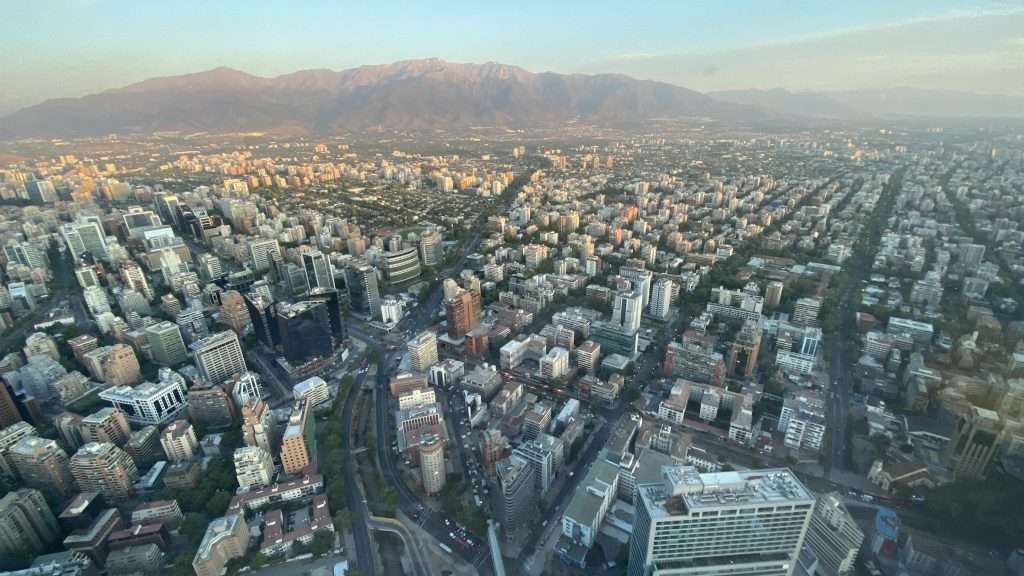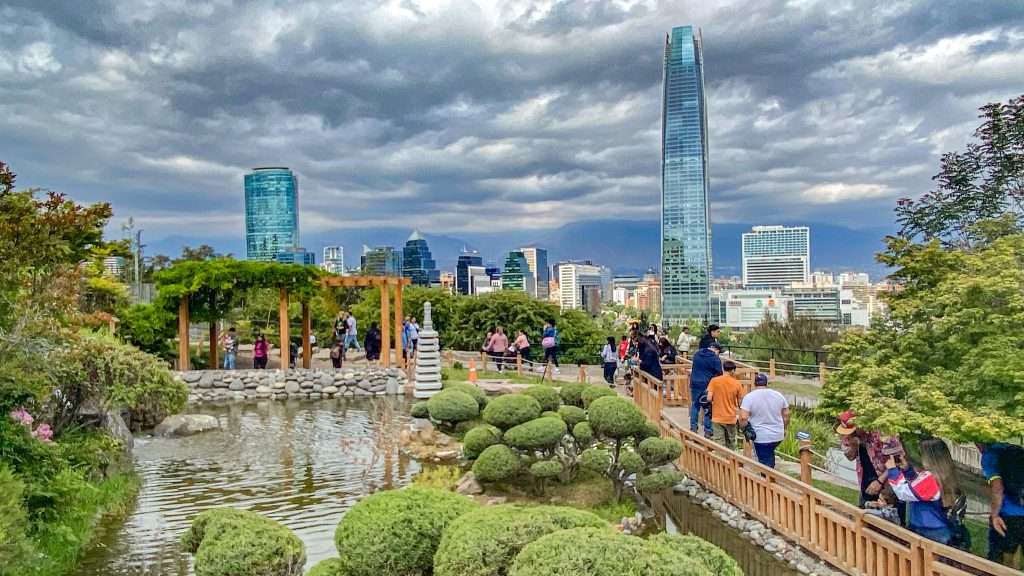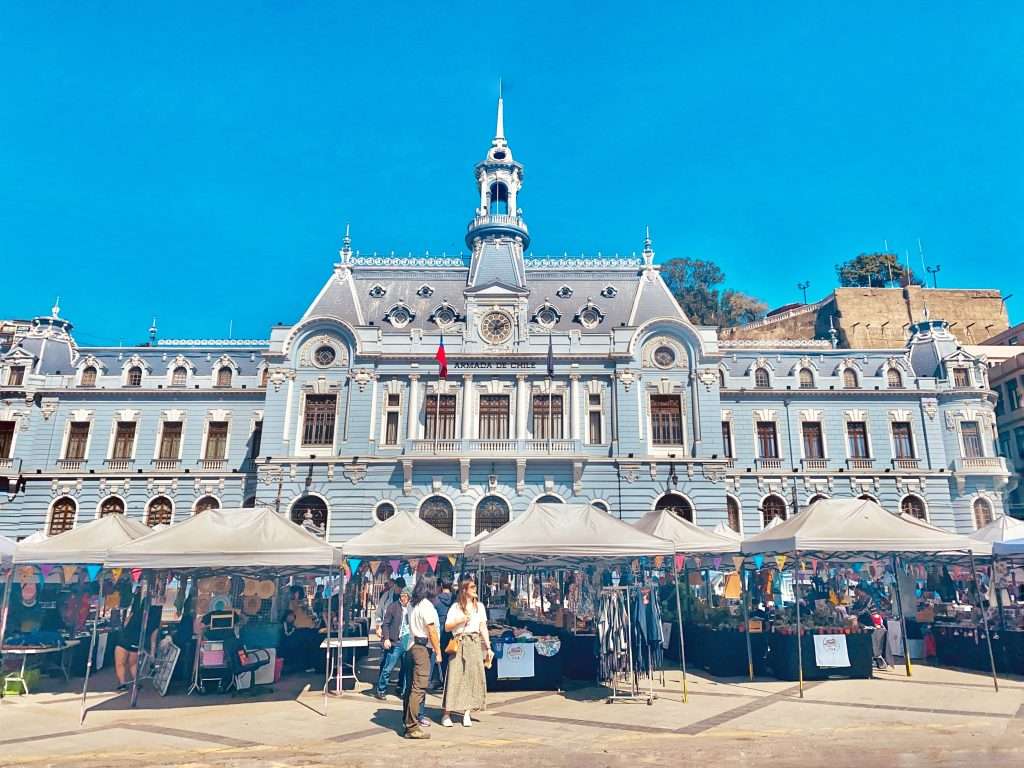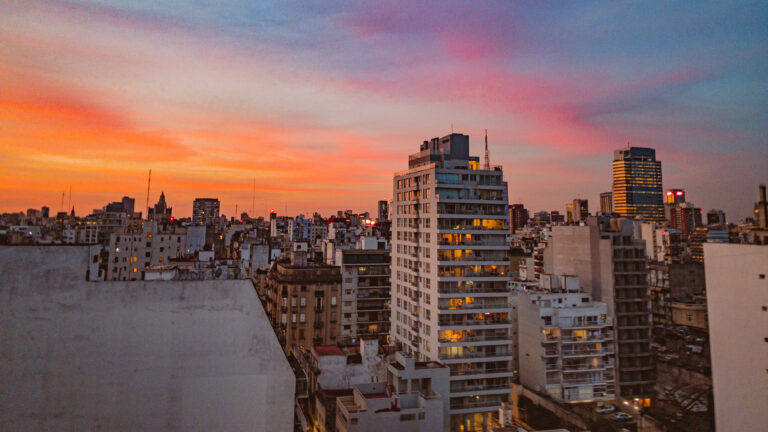Is Santiago de Chile underrated? I think so.

Santiago de Chile is a polarizing city. And I get it. Usually travelers who make it to the southern cone of South America are headed to Buenos Aires, at least as a first stop. BA has had a long-standing reputation as a beautiful, European-style, exciting, cultured, and ultra-cheap megacity. Santiago…has not. But is this fair? Is it even accurate in 2024? I have spent more than two months in Santiago, and I am visiting for the second time, so I can say that I have definitely found many positive aspects and reasons why Santiago might check a lot of boxes for a short or medium-term stay. But I also acknowledge that it has its drawbacks, like all cities. Read on and decide for yourself whether Santiago seems like a good fit for you.
If Buenos Aires is the most “European” city in South America, then Santiago is the most North American. The geographic location in a mountain valley, the sprawl, and the arid climate reminds me very much of a mix of Los Angeles and Phoenix. Roughly speaking, the city center is more dense, older, a mix of some beautiful historic architecture (albeit on a much smaller scale than what BA offers) and a lot of very bland, unattractive buildings. Providencia is to the east of the center, a bustling commercial area full of somewhat dated architecture, but with a bit of everything in terms of shopping, food, and nightlife. Going further east, districts like Las Condes and Vitacura are newer, calmer, and cleaner, full of gleaming high rises, upscale shopping centers, and new urbanism. Unsurprisingly, these areas are more expensive. Expect to pay upwards of $800-900 a month for a basic studio Airbnb in these areas, while there are decent options in the $600-700 region close to the city center.
Things To Do in Santiago
At first glance, Santiago is a bit of an urban jungle. It’s a city that takes a bit of effort and time to understand. I see it often dismissed on forums as “boring.” I strongly disagree – it’s a metro area of 7 million people, after all. I cannot imagine running out of things to do here, especially if you like the outdoors. Santiago has several excellent parks, most notably the massive Parque Metropolitano which encompasses the skyline-dominating Cerro San Cristobal. Here you will find hiking trails, a cable car, funicular, a zoo, a Japanese garden, multiple lookout points, and the iconic sanctuary at the top. Additionally, there is the sprawling Parque Bicentenario just to the east of Parque Metropolitano. Close to the city center is Santa Lucia Hill, with its gorgeous Italianate Neptune fountain, gardens, statuary, a castle and more. Additionally, Parque Forestal and Parque Quinta Normal are very attractive and home to some of the more notable museums in town.

In terms of museums, there are quite a few to choose from, but I would name one specifically as a must-see: The Museum of Memory and Human Rights (Museo de la Memoria y Los Derechos Humanos), which is dedicated to exploring the period of Chile’s military dictatorship between 1973-1990. I think it’s impossible to understand modern day Chile without understanding the effects of the Pinochet years and all the cultural repressions of that time – this museum will definitely help put things in perspective. It’s also free to visit for everyone, and is located just across the street from Parque Quinta Normal.
Other museums that are worth a visit, depending on your interests: the highly rated Museo Chileno de Arte Precolumbiano – pre-Columbian history, art and artifacts not only from Chile, but from all around Latin America. This museum is very close to the Plaza de Las Armas, in the Centro Historico of Santiago, where you can also visit the National Museum of History. I will be honest, this one feels a bit poorly laid out and if you aren’t fluent in Spanish, it might not be very informative. But it’s free – so there’s nothing to lose by popping in while in the area. Museo Nacional de Bellas Artes – National Museum of Fine Arts – housed in a beautiful building, free to visit, exhibitions of varying quality. Also check Centro Cultural La Moneda, underneath the Palacio Moneda (Chile’s presidential palace) for rotating exhibitions. Some galleries are free, some have a small entry fee. Casa Museo La Chascona – Pablo Neruda’s Santiago home in the colorful Bellavista neighborhood, decorated in a rather quirky manner.
Shopping in Santiago
Shopping: Chile has a reputation for being one of the more expensive Latin American countries, but currently I find prices on most items (food, clothing, etc.) to be more or less in line with the US or Western Europe. During my first visit to Chile in 2022, the Chilean peso was trading around 890 to the US dollar; this past visit, it was closer to 1000 peso to the dollar. It’s volatile, to say the least, so the perception of value will vary depending on the exchange rate when you visit.
Santiago has numerous shopping malls, some of which are quite upscale. While I have not visited them all, I would give special mention to Parque Arauco, next to the similarly-named Auracano Park (another excellent green space with all the amenities you could ask for – don’t miss the beautiful rose gardens if you visit in spring!). Parque Arauco is as modern and nicely designed as any mall I have seen in North America. Across the street is another beautiful space called Open Kennedy, which is smaller but features an IKEA (the first in South America, I believe), Decathlon, a Tottus supermarket, and an upscale food court.
One can’t talk about Santiago without mentioning the Costanera Center. If you have seen any photos of Santiago, you’ve seen this colossal skyscraper dwarfing the rest of the skyline. Ok, this isn’t Dubai – maybe it’s not that grand compared to the highrises found in other parts of the world, but it’s still the tallest building in South America. The shopping center at the Costanera Center is large, popular, always crowded, and confusing to navigate; however, if you are looking for one-stop shopping in a central location, you will probably find yourself here at least once. Here you can also access the top of the Costanera Tower for incredible views of the city. I went at sunset on my first visit, and I don’t regret it. However, tickets as of this writing are $18000 pesos for adults. I will let you decide if it’s worth it, but if you do decide to go, make sure it’s on a clear day for the best experience.
A very different shopping experience can be found at Centro Artesanal Los Dominicos, a historical village at the far east side of the city (last stop on the red metro line). The open-air shopping center is full of artisan shops selling jewelry, textiles, pottery, art, crafts, and souvenirs which are a step above the usual tourist tat. More than that, it’s a very calm and pleasant environment full of lush greenery, flowers, and a few cats roaming around.
Day trips beyond Santiago
As you can see, there is plenty to do within the city, but what really makes Santiago a great base to stay for awhile is the ability to get out and explore the diversity of Chile. You can easily visit the coast for a day: multiple bus lines will take you to Vina del Mar, Valparaiso, or Concon, all basically part of the same conurbation but with very different vibes, approximately 1.5 hours away from Santiago. There are plenty of close-by options for hiking beyond what you can do within the city itself; many of these will require a vehicle, but one option that is more accessible by public transit is Parque Natural Aguas de Ramon, with helpful English instructions on their website. The park has a modest entrance fee and several different trails, including one with a waterfall.

If you are a ski or snowboard aficionado visiting during the southern hemisphere winter, there are 4 resorts that can be reached in 2 hours or less from the city. Another great day trip option for wine fans is the Maipo Valley, approximately 40 minutes to the south of Santiago. There are a multitude of day tours available which will allow you to sample various wineries and leave the driving to someone else.
This is just a very broad overview of all that Santiago has to offer. I myself have barely scratched the surface in terms of exploring. As a final point, I would say that being centrally located in this long and skinny country makes it very easy to grab a budget flight to either the north or south of the country. It’s totally doable to spend a few days in Patagonia or the Atacama desert with just a backpack.
Drawbacks of Santiago
While I absolutely do think Santiago is underrated, I know it’s never going to be ideal for everyone. And I want to paint an accurate picture of the city. This is a huge metropolis, and it comes with the same issues as any city this size. The city center can be rough around the edges, especially at night. You do need to practice situational awareness and have basic street smarts. Also, Santiago definitely has a pollution problem, which I have heard is at its worst in winter. So far I have visited only in spring and autumn. When I have been there, there is a visible haze that makes the mountains sadly less visible, but I have not experienced any breathing issues. I have been to cities where I felt like I was constantly choking on diesel fumes (Naples and Quito come to mind), and Santiago isn’t like that. I would say the air quality outside of winter is similar to Los Angeles and Phoenix. Not good, but also not Chinese-industrial-city bad. However, I wouldn’t recommend Santiago to anyone with respiratory issues.

